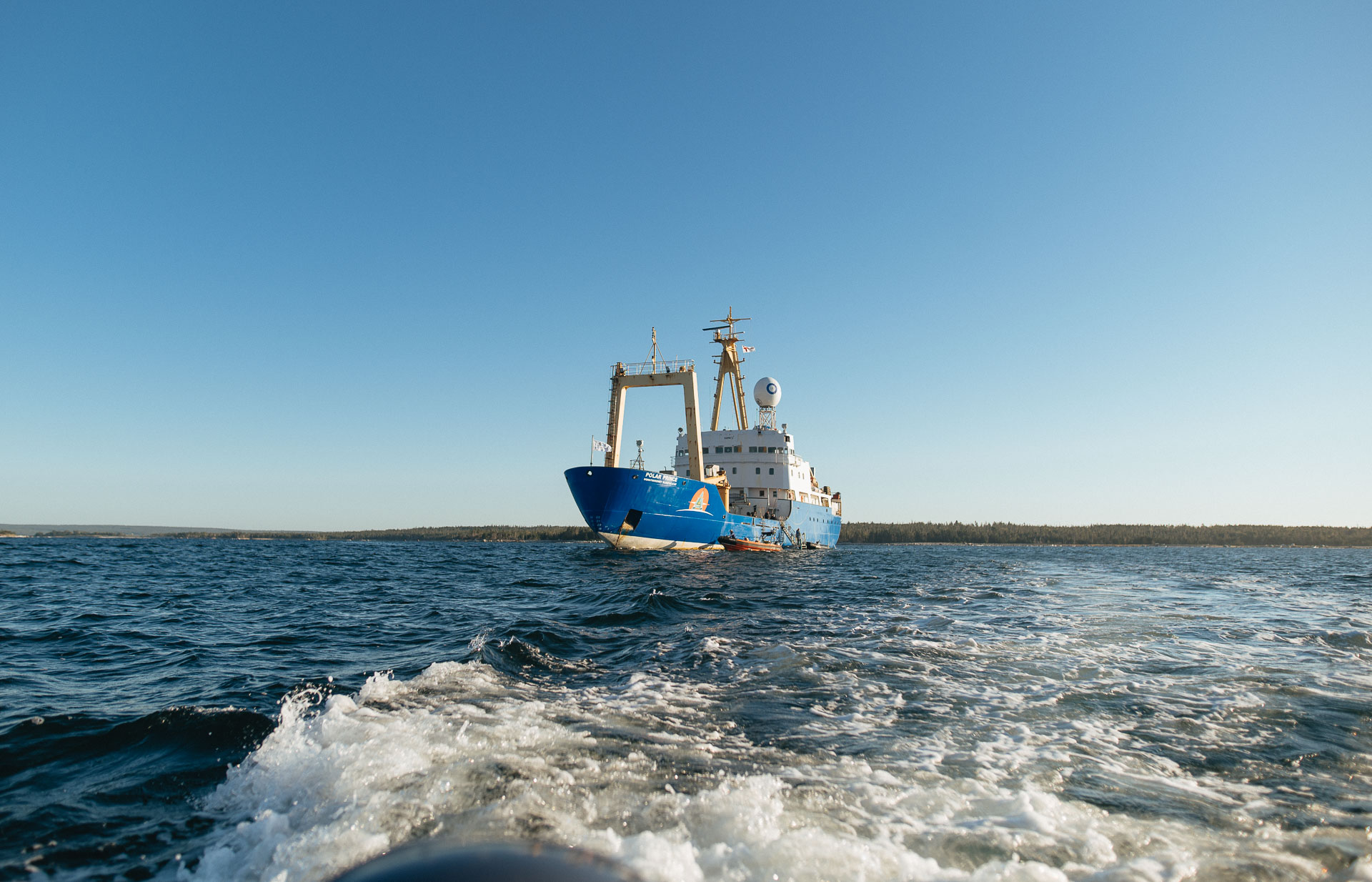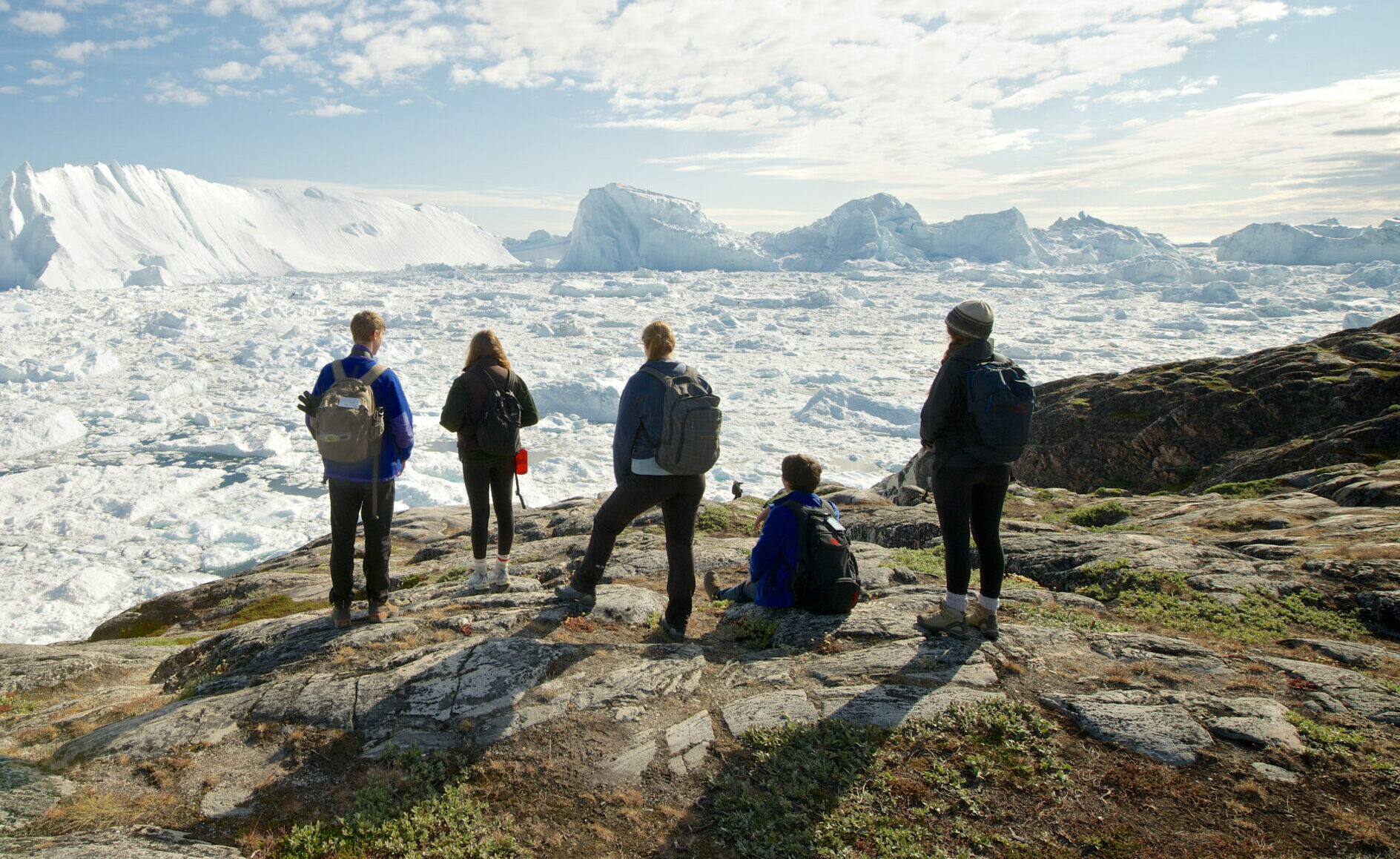2024 Innu Nation Uinipekᵁ Expedition Leg 2 Recap
Leg 2 of the 2024 Innu Nation Uinipeku Expedition kicked off with youthful energy as participants from Sheshatshiu said their goodbyes and Mushuau Innu boarded the ship in Natuashish, eager for the journey ahead. Greeted by Innu Nation and Students on Ice staff and educators, the purpose of the expedition was made clear: to conduct ocean science in Innu waters and to foster capacity building and career opportunities for Innu youth. Led by Innu Nation, this initiative aims to add to the understanding of the Innu Nation’s marine environment and expose Innu youth to land and ocean conservation skills thereby fostering Innu stewardship of Nitassinan into the future.
Community and Courage
The expedition’s first stop was a day around Utshimassits (Davis Inlet) to visit with Mushuau Innu leaders, guardians, and community members. They were greeted by community members from Natuashish who led a tour of the community, and explained the value of the expedition’s visit in helping the younger generation connect with and understand their heritage. The group also visited Utshimassit-minishtiku (“The Place of the Boss” Island), across from Old Davis Inlet, where the remnants of an old trading post that once belonged to Hudson’s Bay Company (HBC) remains.

The science team, including staff from Innu Nation, Fisheries and Oceans Canada, and Canadian Museum of Nature, introduced the youth to various scientific activities. These included water sampling, collecting macroalgae, and surveying the ocean floor with remote operated vehicles (ROV).
Early in the expedition, the group visited Wolf Island, where they collected red berries, spruce tips, tamarack, Labrador tea, beach peas, and Arctic potato. The spruce, tamarack, and Labrador tea were steeped into beverages over the following days.
Hands-On Workshops
The dive team also delved into the significance of marine life, particularly the incredible kelp forests they surveyed, with huge blades measuring 10 metres tall. Crucial for marine ecosystems, this kelp provides shelter and food for diverse marine species, capturing vast amounts of carbon dioxide through photosynthesis and contributing to climate change mitigation. Surveys like the ones the science team are conducting help inform the Innu Nation’s approach to marine stewardship.

The science team led various hands-on workshops. Huntsman Marine Science Centre staff worked with youth to take grab samples from the sea floor, while other participants collaborated with Canadian Museum of Nature scientists on seaweed and plant pressing. A Fisheries and Oceans Canada biologist engaged the youth in examining microscopic marine life in the MEOPAR mobile wet laboratory.
The youth also tackled the issue of ocean plastics, examining debris collected during the first leg of the journey. They learned about the risks plastics pose to marine life and participated in activities to catalogue and analyze the types of plastics found, like the bottles they found that came from Denmark (likely via Greenland).
Drifters and Ocean Currents
The youth learned about tracking ocean currents using drifters and the importance of this data for marine monitoring. Reviewing the progress of drifters deployed the week prior by the participants on the first leg of the expedition, we noted a combined journey of 460 km in just four days! And we compared that to the extensive travels of drifters set adrift on the 2023 Uinipeku expedition of over 50,000km in the last year. The youth were tasked with naming their own set of drifters, choosing Innu-aimun names such as Pishim shueu (sun woman) and Kuekuatsheu (wolverine). Then they participated in a “drifter olympics,” launching their drifters into the sea. Keep an eye on the Innu Marine’s Facebook page throughout the year ahead for more updates on their travels.

As the expedition continued, the youth engaged in various scientific activities, from water sampling to preserving seaweed samples. The collaboration between the Innu Nation and the science team, with youth at the center, was a significant aspect of the journey.
One biologist highlighted the importance of this work, noting how the marine environment is changing, and that it’s crucial to monitor these changes over time. This information can help inform decision-making for the coastal zone.
A Transformative Experience
The Innu Nation Uinipekᵁ Expedition’s second leg was a transformative experience for all involved. The youth learned and shared about their land, gained a deeper understanding of their marine areas, developed new skills, learned about the power of community, and contributed to the Innu Nation’s future. This expedition proved that through courage, curiosity, and collaboration, the youth of the Innu Nation are paving the way for a brighter future.

Watch the Leg Two Recap Video here:





